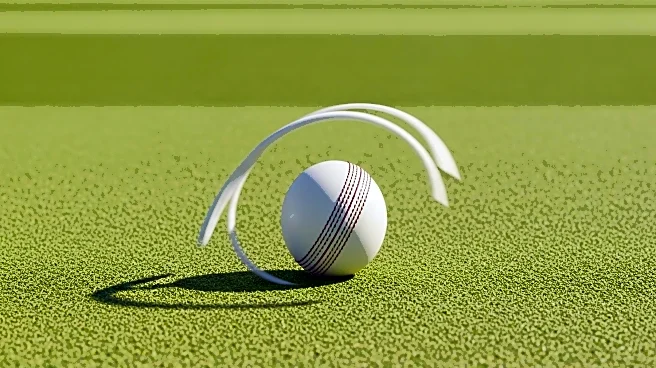What is the story about?
What's Happening?
Former India captain Sourav Ganguly has dismissed comparisons between cricketer Abhishek Sharma and legendary batsman Virender Sehwag. Ganguly emphasized that Sehwag's stature in Test cricket remains unmatched, despite Abhishek's fearless stroke play earning praise across formats. Ganguly, who captained Sehwag during India's resurgence in the early 2000s, stated that Sehwag was in a different class and cannot be compared to Abhishek straight away. While acknowledging Abhishek's potential and fearlessness, Ganguly maintained that the young cricketer has a long way to go before being spoken of in the same breath as Sehwag.
Why It's Important?
The discussion highlights the challenges faced by emerging cricketers in living up to the legacy of past legends. Ganguly's remarks underscore the weight of Sehwag's achievements, including his two Test triple centuries and unconventional strike rate. This comparison serves as a reminder of the high standards set by previous generations and the pressure on new players to perform at similar levels. It also reflects the evolving nature of cricket, where aggressive play is more common, yet the fundamentals of patience and shot selection remain crucial for success in Test cricket.
What's Next?
Ganguly hinted that Abhishek Sharma's next challenge lies in achieving consistency in red-ball cricket, which is considered a true measure of greatness. As cricket continues to evolve with faster and flashier gameplay, mastering the art of constructing an innings remains essential. Abhishek's development in this area will be closely watched by fans and analysts, as he seeks to establish himself as a formidable player in both white-ball and red-ball formats.
Beyond the Headlines
Ganguly's comments reflect broader themes in sports, such as the pressure on young athletes to meet high expectations and the importance of balancing aggression with strategic play. The conversation also touches on the cultural shift in cricket towards instant aggression, contrasting with the traditional approach of building an innings. This evolution in playing style may influence how future generations of cricketers are trained and evaluated.
AI Generated Content
Do you find this article useful?













